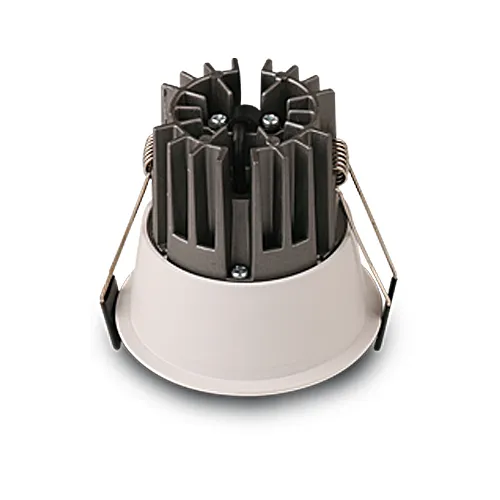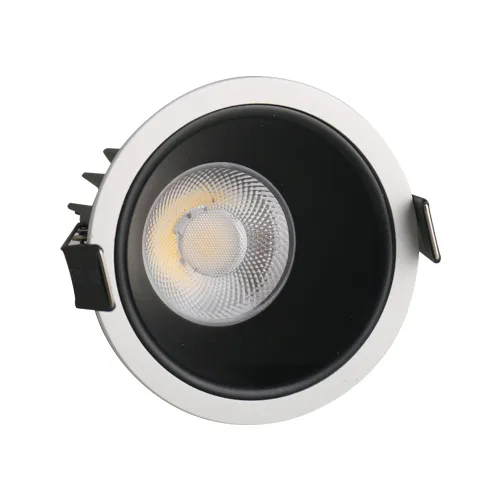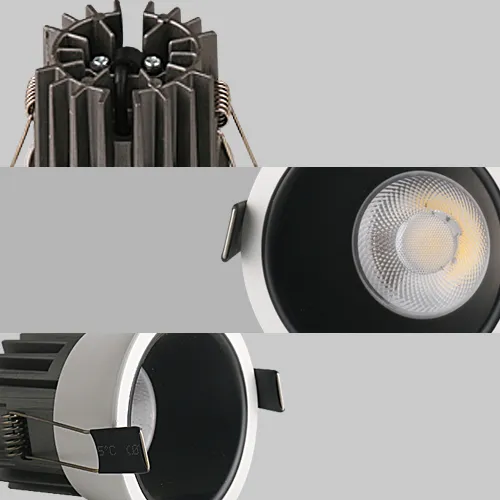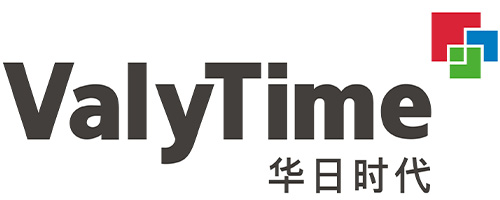If you need light in different directions, can LED spotlights be adjusted?
In modern lighting applications, LED spot lights have gradually become the preferred lighting equipment for many scenes due to their high efficiency, long life and flexible application characteristics. It not only provides powerful lighting effects, but also has a variety of adjustment options, especially the adjustment of the beam direction. This flexibility allows LED spot lights to adapt to various complex lighting needs, especially in places where lighting in a specific direction is required.
This article will explore whether LED spotlights can adjust light in different directions, and analyze in detail how to achieve this adjustment function through design and technical means.

Basic characteristics of LED spotlights
1.1 What is an LED spotlight?
LED spotlights are lighting devices that provide light through light-emitting diodes (LEDs), usually designed as concentrated light sources. Compared with traditional light sources (such as incandescent lamps or halogen lamps), LED spot lights have higher energy efficiency, longer service life and smaller size. The beam of LED spotlights is usually directional, and the light is concentrated into a narrow beam through specific optical designs (such as lenses, reflectors, etc.), which is suitable for scenes that require focused lighting.
1.2 Advantages of LED spot lights
● High efficiency: LED spot lights have high light efficiency and can provide strong light at lower power.
● Energy saving and environmental protection: Compared with traditional lamps, LED spot lights consume less electricity, generate less heat, and are more environmentally friendly.
● Long life: The service life of LED spotlights is usually between 25,000 hours and 50,000 hours, which greatly reduces the replacement frequency and maintenance cost of lamps.
● Beam adjustability: According to different needs, LED spot lights can be designed with adjustable beam angles or rotatable structures to meet the needs of light in different directions.
1.3 Application of LED spotlights
LED spotlights are widely used in commercial lighting, architectural lighting, art exhibitions, stage lighting and other places due to their highly concentrated beams and adjustable irradiation range. In these applications, focused light is indispensable, especially when certain objects or areas need to be highlighted. LED spotlights can create the desired visual effects by precisely controlling the direction of the beam.

Adjustment function of LED spotlight
2.1 Beam angle adjustment
The beam angle is a key factor affecting the direction and irradiation range of LED spot lights. Traditional LED spot lights generally use fixed beam angles such as 10 degrees, 20 degrees, 30 degrees, etc. according to design requirements. However, with the advancement of technology, more and more LED spot lights have the function of adjustable beam angles, allowing users to change the irradiation range and concentration of light according to actual needs.
By using different lenses, reflectors or adjustable beam angle structures, LED spot lights can provide lighting effects ranging from narrow beams (such as 10 degrees) to wide beams (such as 60 degrees) to meet the needs of different places. Adjusting the beam angle can effectively change the direction of light, allowing it to focus on a specific area or object, or spread to a wider area for regional lighting.
2.1.1 Working principle of adjustable beam angle
The beam angle adjustment of LED spot lights is usually achieved in the following ways:
● Lens adjustment: Adjust the focus of light by changing the shape or focal length of the lens. A smaller lens focal length will make the beam more concentrated and the beam angle smaller; a larger lens focal length will disperse the beam and increase the beam angle.
● Reflector design: The reflector in the LED spotlight guides and focuses the light. The design of the reflector can affect the degree of diffusion of the beam. Some LED spotlights allow users to adjust the position or angle of the reflector to control the propagation direction and concentration of the light.
● Adjustable lamp head: Many LED spotlights have a rotating lamp head, and users can change the direction of the light source manually or through an electric mechanism. By rotating the lamp head, users can flexibly adjust the direction of light to meet the needs of different places.
2.1.2 The actual effect of beam angle adjustment
With adjustable beam angle, LED spotlights can achieve precise lighting in different scenarios. For example, in some commercial lighting environments, LED spotlights can be used to highlight goods. Users can adjust the beam angle to focus the light on the product to attract customers' attention. In exhibition displays, the adjustment function of LED spotlights allows the light around the exhibits to be focused or expanded to highlight key areas or create a specific atmosphere.

2.2 Rotation and adjustable direction
In addition to changing the irradiation range by adjusting the beam angle, another important adjustment function of LED spotlights is to rotate and adjust the irradiation direction of the light source. Many LED spotlights are designed with a rotating lamp head or bracket, so that the light can be freely adjusted in multiple directions. Usually, LED spotlights can rotate in the horizontal and vertical directions, allowing users to change the irradiation angle of the light as needed.
2.2.1 Design principle of rotating lamp head
The rotating lamp head is usually rotated by a set of adjustable electric or mechanical devices. Electric rotating LED spotlights are usually equipped with built-in motors or stepper motors, which are adjusted by remote control or intelligent control systems. Mechanical rotating lamp heads usually change the angle of the lamp by manual operation. By rotating, the lamp head can be freely adjusted within a certain angle to change the irradiation direction, so that the LED spotlight can adapt to different lighting needs.
For example, in stage lighting, the rotation function of LED spot lights can help lighting technicians quickly adjust the irradiation direction of the light according to the needs of the performance, focusing on actors or specific stage props. In exhibition spaces, rotating lamp heads can also help exhibitors quickly adjust the lighting direction between different exhibits to highlight different exhibits.
2.2.2 Advanced functions of electric adjustment
In addition to basic manual rotation, the electric adjustment system of modern LED spotlights can achieve precise direction control through advanced control systems. Such electric adjustment spotlights are often integrated into intelligent lighting systems and can be adjusted through mobile applications or remote control devices. In some large venues, the electric adjustment system can be programmed to accurately control the light direction and brightness of each spotlight, greatly improving the flexibility and effect of lighting.
2.3 Dimming and brightness adjustment
In addition to adjusting the beam angle and light source direction, many LED spot lights also have the function of brightness adjustment. This is very important for applications that need to adjust the brightness at different time periods or different lighting needs. For example, in a museum exhibition, some exhibits may require lower brightness lighting to protect them from light damage, while other exhibits may require stronger lighting to attract the audience's attention.
The brightness of LED spot lights is usually adjusted through dimmers or electronic driver modules, and users can adjust the brightness of the lamps as needed. The dimming function can usually be combined with the beam angle adjustment and rotation functions, allowing users to accurately control the direction, brightness and irradiation range of the light in different environments.
